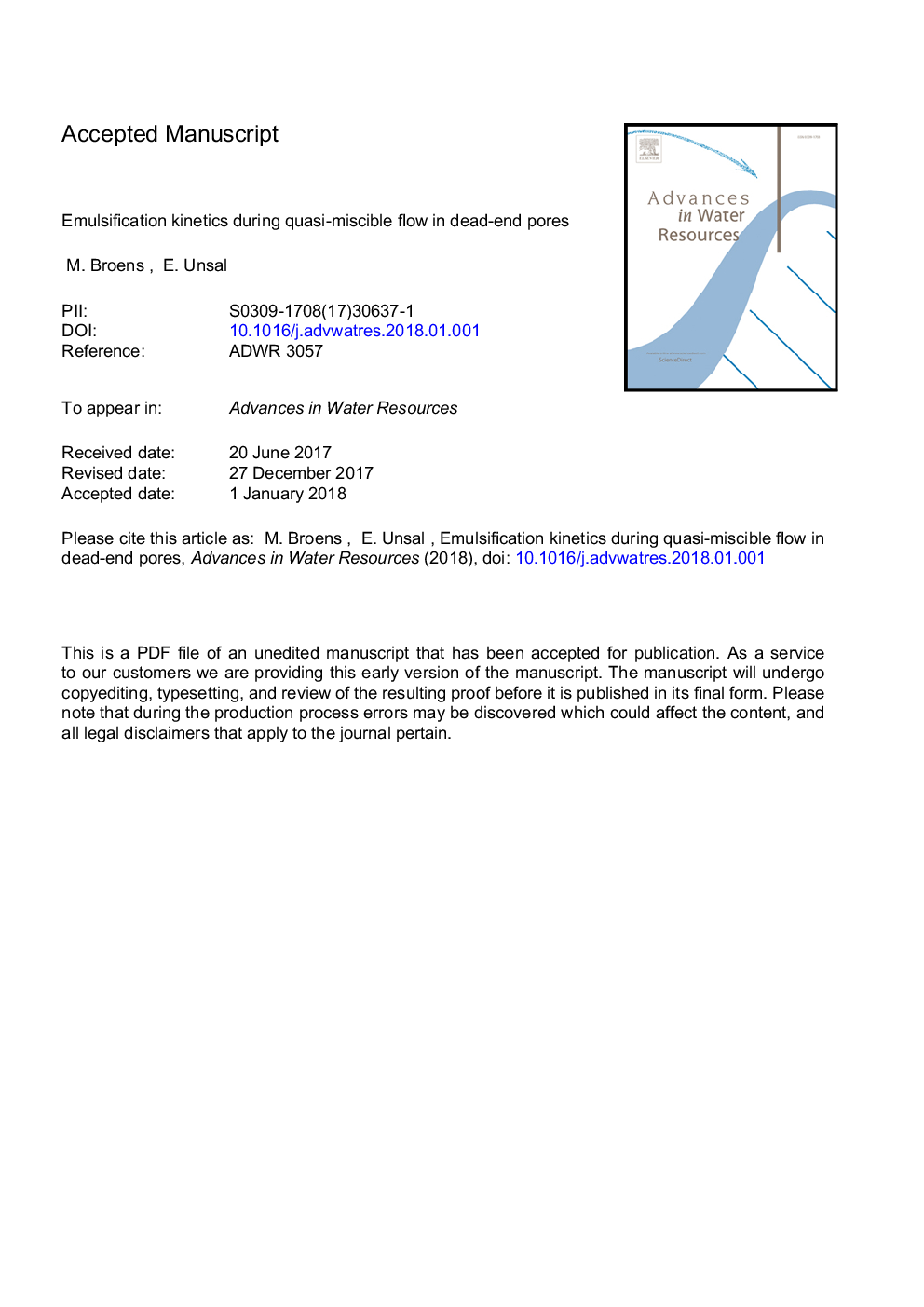| کد مقاله | کد نشریه | سال انتشار | مقاله انگلیسی | نسخه تمام متن |
|---|---|---|---|---|
| 8883344 | 1625598 | 2018 | 33 صفحه PDF | دانلود رایگان |
عنوان انگلیسی مقاله ISI
Emulsification kinetics during quasi-miscible flow in dead-end pores
ترجمه فارسی عنوان
سینتیکی امولسیون در جریان شبه مخلوط در منافذ های
دانلود مقاله + سفارش ترجمه
دانلود مقاله ISI انگلیسی
رایگان برای ایرانیان
کلمات کلیدی
موضوعات مرتبط
مهندسی و علوم پایه
علوم زمین و سیارات
فرآیندهای سطح زمین
چکیده انگلیسی
Microemulsions have found applications as carriers for the transport of solutes through various porous media. They are commonly pre-prepared in bulk form, and then injected into the medium. The preparation is done by actively mixing the surfactant, water and oil, and then allowing the mixture to stagnate until equilibrium is reached. The resulting microemulsion characteristics of the surfactant/oil/water system are studied at equilibrium conditions, and perfect mixing is assumed. But in applications like subsurface remediation and enhanced oil recovery, microemulsion formation may occur in the pore space. Surfactant solutions are injected into the ground to solubilize and/or mobilize the non-aqueous phase liquids (NAPLs) by in-situ emulsification. Flow dynamics and emulsification kinetics are coupled, which also contributes to in-situ mixing. In this study, we investigated the nature of such coupling for a quasi-miscible fluid system in a conductive channel with dead-end extensions. A microfluidic setup was used, where an aqueous solution of an anionic, internal olefin sulfonate 20-24 (IOS) surfactant was injected into n-decane saturated glass micromodel. The oil phase was coloured using a solvatochromatic dye allowing for direct visualization of the aqueous and oil phases as well as their microemulsions under fluorescent light. Presence of both conductive and stagnant dead-end channels in a single pore system made it possible to isolate different transport mechanisms from each other but also allowed to study the transitions from one to the other. In the conductive channel, the surfactant was carried with flow, and emulsification was controlled by the localized flow dynamics. In the stagnant zones, the driving force of the mass transfer was driven by the chemical concentration gradient. Some of the equilibrium phase behaviour characteristics of the surfactant/oil/water system were recognisable during the quasi-miscible displacement. However, the equilibrium tests alone were not sufficient to predict the emulsification process under dynamic conditions.
ناشر
Database: Elsevier - ScienceDirect (ساینس دایرکت)
Journal: Advances in Water Resources - Volume 113, March 2018, Pages 13-22
Journal: Advances in Water Resources - Volume 113, March 2018, Pages 13-22
نویسندگان
M. Broens, E. Unsal,
